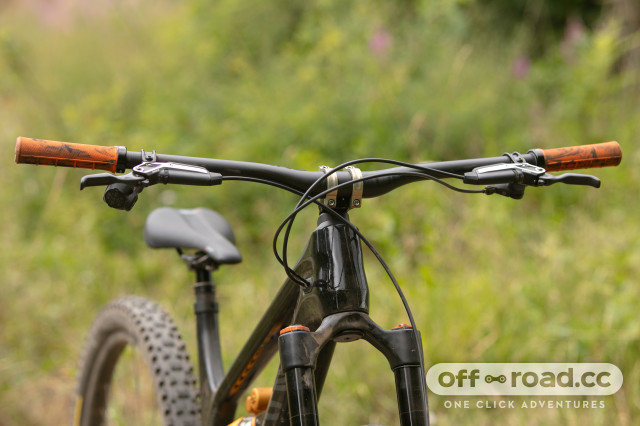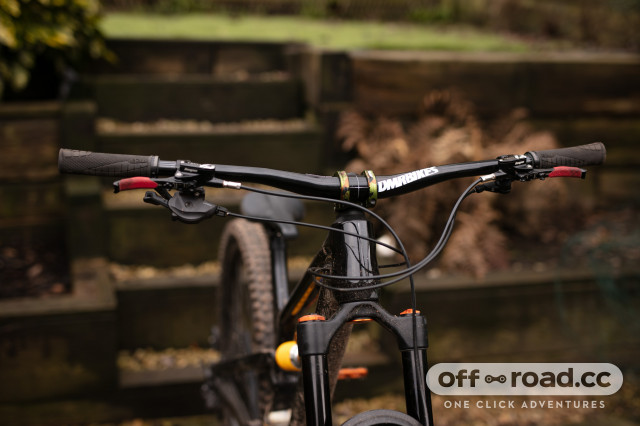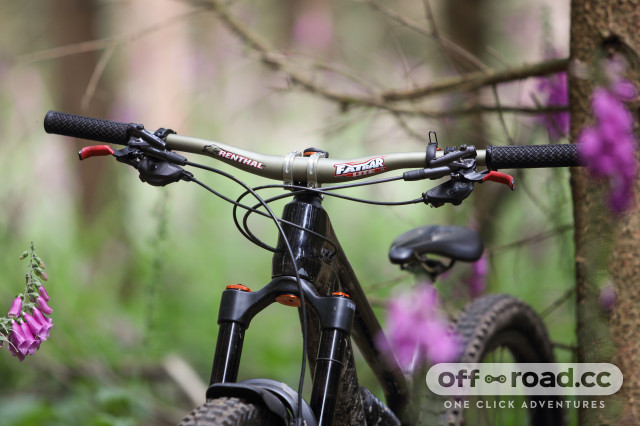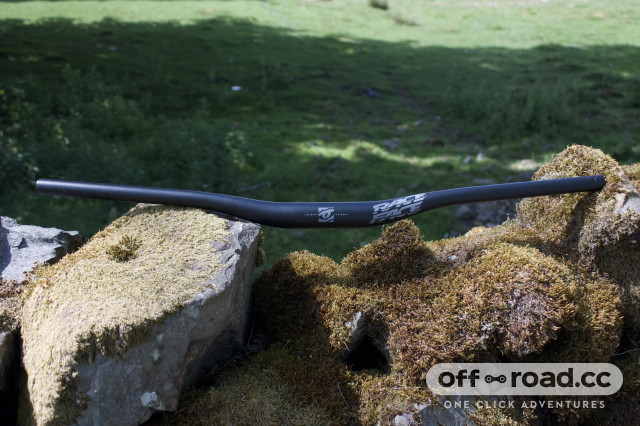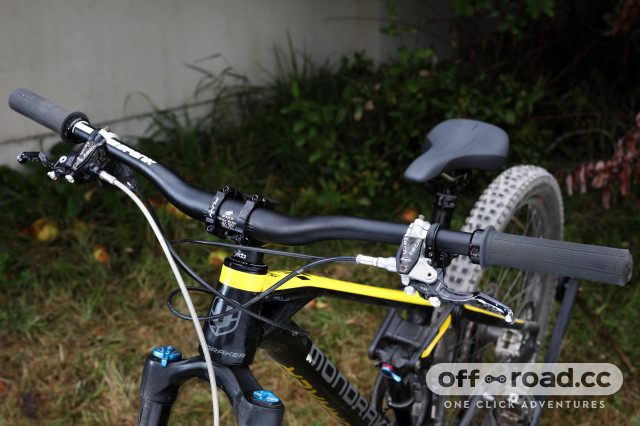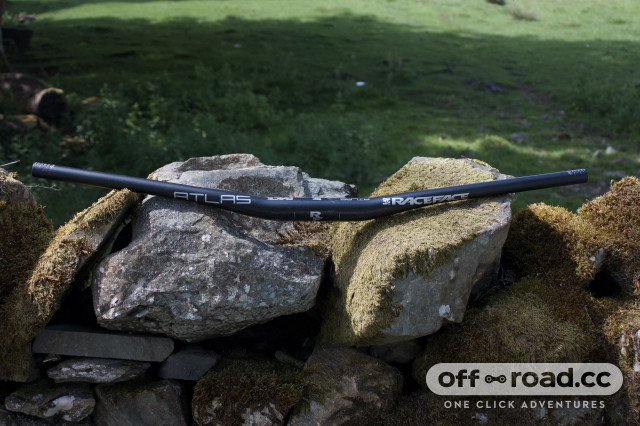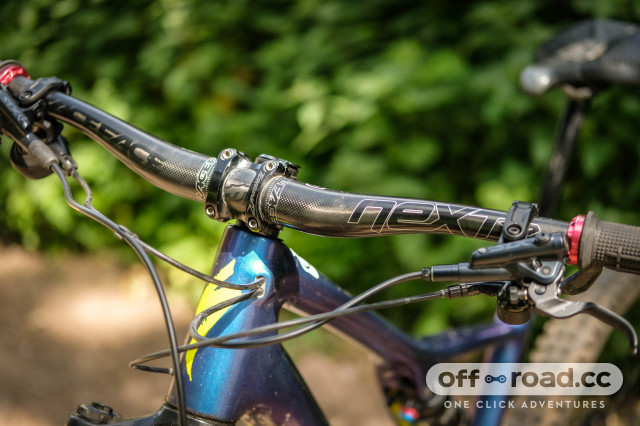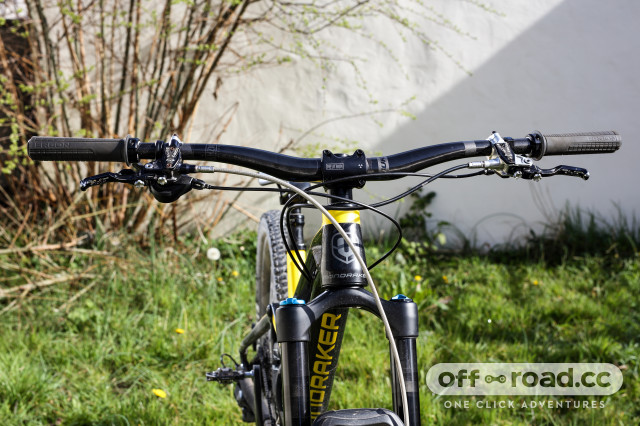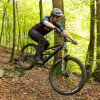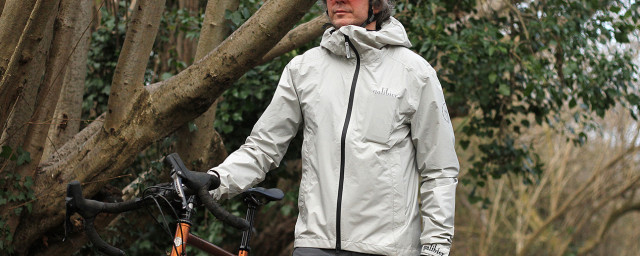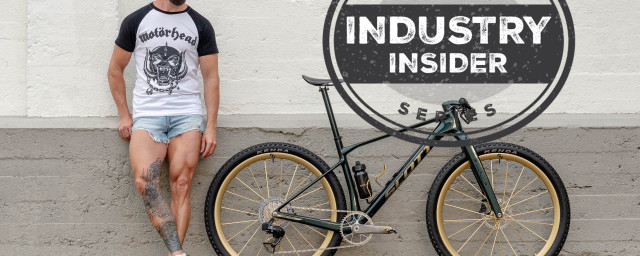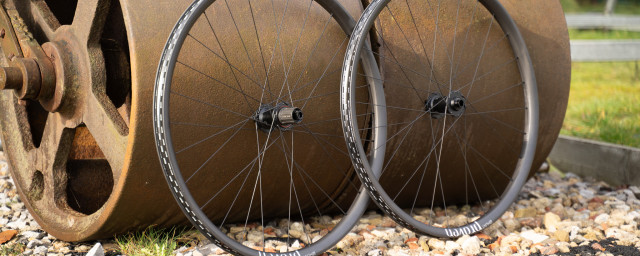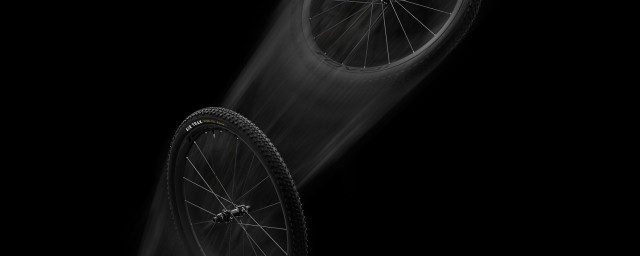Best MTB handlebars - tried and tested trail bars

The best MTB handlebars may come in a plethora of shapes and sizes but they all do one thing – provide control and support over the bike, while being home to all of your bike's controls. However, owing to the massive selection of measurements, angles and flex profiles choosing a handlebar can get surprisingly complicated. To help you, here's a collection of the best MTB handlebars we've tested, along with a few tips on how to get the best bar for you.
Much like mountain bikes themselves, handlebars are built with geometries. A handlebar's geometry or shape comprises its width, backsweep, upsweep, rise and clamp diameter. All of these affect how your bike's cockpit feels to ride and the comfort it offers.
The width of a handlebar is the first thing people look at when buying their next handlebar as it's the most noticeable measurement that has a large bearing on how the cockpit feels. There are advantages and disadvantages of both wide and narrow handlebars with the former offering more leverage when cornering and more to push against under compression. A narrow handlebar is lighter as there's less material and it'll make navigating heavily wooded trails easier because the rider will be able to slither through tight trees without catching the end of their handlebar.
A handlebar's upsweep is the angle at which the ends of the bar rise from parallel to the bar's stem clamping area. Most handlebars come with some level of upsweep as they give support when riding through bumpy terrain. However, many bars are completely flat as they put rider weight more forward on the bike, which is ideal for control and predictability when climbing.
Backsweep is the measurement of the angle of the grips to the clamping area. An eight to 10-degree backsweep is commonly found on many handlebars but some brands such as SQlab, push the boundaries in pursuit of enhanced ergonomics. A handlebar's backsweep dictates how your hands and wrists line up when gripping the bar.
A bar's rise measures the distance that the grip area of the bar rises from the centre point of the handlebar. A handlebar's rise affects a rider's weight over the bike, with a lower-rise handlebar placing more weight on the front of the bike, whereas a high-rise bar will place weight further back. Having a low-rise bar will improve front wheel grip and provide better communication of the front wheel. A high-rise handlebar will offer more control when the trail gets steep while resulting in a more upright riding position, which will be valuable to those with back issues. But note, that a higher rise isn't the same as putting more stem spacers under the stem. Doing so will move the handlebar backwards while raising it. Choosing a high-rise handlebar will keep the handlebar in the same place and put the grips in a higher position.
Mountain bike handlebars come in two clamp diameters: 31.8- and 35mm. A 31.8mm clamp diameter will be lighter owing to less material and it will be more compliant to bumps. A thicker 35mm clamp diameter provides a more direct character under steering thanks to increased stiffness, generally. However, some handlebars aim to balance the direct steering of a 35mm clamp with an enhanced level of flex.
A handlebar's flex is almost as important as its geometry as compliance and stiffness directly affect comfort and control when descending. Generally, a bit of flex is a good thing as it'll help absorb harsh trail feedback that could lead to arm pump. Although, too much flex would impact control over the bike, feeling as if you're clinging to a wet noodle.
Best MTB handlebars 2024
- OneUp Components Carbon Handlebar
- Gusset S2
- DMR Wingbar MK4
- Renthal Fatbar Lite35
- PNW Range Handlebar Gen 3
- Race Face Chester 35
- Spank Spoon 35
- Race Face Atlas 35
- Race Face Next R 35
- Nukeproof Horizon Carbon Riser Bar V2
- The best MTB handlebar 2024
OneUp Components Carbon Handlebar
£150
OneUp Component's entry into the carbon handlebar space shoots straight for the compliance and stiffness combination and it does so through a special carbon layup but most importantly, through its patented oval shape. Crafting the bar with an oval shape found nearer the clamp area claims to reduce vibration that's transmitted to the hands while being 28% more stiffness along the steering plane.
The result is a handlebar that provides one of the most comfortable cockpits on the market but without holding back on the direct and responsive steering that a 35mm clamp diameter is known for. While looking lovely, it's littered with markers that help dial in the perfect bar setup and the bar's geometry is nothing too crazy either, so a rider can throw on the Carbon Handlebar and likely feel right at home.
If you're looking to add a bunch of comfort to your mountain bike's cockpit, read the OneUp Components Carbon Handlebar review for more.
Gusset S2
£60
It might not be the lightest around but the Gusset S2 handlebar comes with a great shape and direct steering response. On top of that, there's an impressive choice of rises. This bar boasts a top-notch build quality for relatively little money, too.
The flagship handlebar is built using 7075 aluminium and is sorted with a 35mm clamp area, an 800mm width with five degrees of upsweep, and eight degrees of backsweep. It's then available in 10- to 50mm rises.
On the bike, the S2 has proven to be stiff and rock solid through high compressions. This then provides excellent precision when steering which comes into its own when tackling technical trails. Comfort isn't too shabby either, although it was only through longer tracks where the stiffness led to some discomfort.
For more on this bar, have a look at the Gusset S2 handlebar review.
DMR Wingbar MK4
£64
With a lovely black chrome finish, DMR's fourth edition of the Wingbar is aimed directly towards riders who value a lightweight handlebar that doesn't skimp on the stiffness. It's a reasonably priced entry into the handlebar market, too.
Although it's DMR's fourth crack at the Wingbar, not an awful lot has changed but that's no bad thing as the double-butted 7075 alloy bar gets a five-degree upsweep, an eight-degree backseep and 20 to 25mm rise options and a choice of 31.8 and 35mm clamp diameters.
It may be a little heavier than similar bars on the market, but we struggled to find any other fault. The Wingbar looks great, and provides an excellent character on the trail, offering all of the support and stiffness you could want. A smidgeon of extra flex wouldn't go amiss though.
For a closer look at this stylish and budget-friendly bar, check out the DMR Wingbar MK4 handlebar review.
Renthal Fatbar Lite35
£85
The Renthal Fatbar is a household name in the mountain biking world and with good reason. But here, we've got its lighter trail-going stablemate, the Fatbar Lite35. At £85, it's one of the pricier alloy bars around but it's built to a very high quality with a burly shot-peened finish that will look great for years to come.
With its bronze colour, it's instantly recognisable, and it's built with a 760mm width, a seven-degree backsweep and a five-degree upsweep. There are then rises from 10mm up to 40mm and this model gets a 35mm clamp diameter.
On the trail, the Fatbar Lite35 gave good compliance and chatter reduction but it combines the straight-shooting steering character expected of that 35mm clamp. The downsides are few, too, but it would be great to see more width options.
Here's the Renthal Fatbar Lite35 review if you would like to learn more about how it performed during testing.
PNW Components Range handlebar Gen 3
£69
PNW focussed on ergonomics and comfort with this bar, so it gets a whopping ten degrees of backsweep, five degrees of upsweep and a 30mm rise, all in a bid to put the rider's arms and shoulders in a relaxed position.
While testing, we got on with the handlebar's shape while being more backswept than usual and we were impressed and surprised with the level of compliance the Range handlebar can muster. This ups the comfort and control when rattling through rock gardens and the like. Given that this handlebar isn't quite like any other alloy bar, its price looks very reasonable.
For more details, here's the full PNW Components Range Handlebar Gen 3 review.
Race Face Chester 35
£50
Race Face's Chester 35 gets a cold-drawn 6061 alloy build all in the name of durability. There's a five-degree upsweep, an eight-degree backsweep and a rise range of 10 to 35mm. It measures 780mm wide and can be cut down.
There's no hiding the fact that this is a bar for the gravity rider that's built for strength and reliability, as such, it's very stiff which provides loads of communication with the front wheel, albeit at the expense of some long-term comfort.
For a deeper look at this bar, be sure to read the Race Face Chester 35 handlebar review.
Spank Spoon 35
£70
Simplicity is the name of the game with the Spank Spoon 35. It's subtly styled and sorted with serious rise options from 25 up to 60mm. It's then available with 31.8- and 35mm clamp diameters and a choice of five or eight-degree backsweeps, which is great to see. The upsweep is five degrees on all bars.
What's cool is that this bar complies with ASTM International's highest riding conditions classification, so it's certified as strong enough for burly DH riding. On the trail, steering precision owing to its stiffness is noticeable and its geometry is perfectly comfortable.
Here's the Spank Spoon 35 handlebar review for a deeper look.
Race Face Atlas 35
£80
Another Race Face handlebar deemed worthy enough to be one of the very best is the Atlas 35. It's very wide, measuring 820mm in width, and is made from cold-drawn 7075 alloy. It comes in 30 and 35mm rises and is sorted with a five-degree upsweep, and an eight-degree backsweep and we found it to be rather comfy.
The extra width means that you may need to replace your cables and hoses to hand your controls but the stability they offer is above many alternatives. Steering accuracy is enhanced but as there's more leverage, our tester found that vibration was transmitted much more.
Check out the full Race Face Atlas 35 handlebar review for more details.
Race Face Next R 35
£150
This Race Face bar is 800mm wide, comes with 10 to 35mm rises, and has an eight-degree backsweep and a five-degree upsweep – all common figures.
That backsweep places the wrists in a great position for front-end loading on techy descents and its unidirectional carbon layup hides scratches rather well. It's stiff too but its carbon build absorbs trail chatter effectively while shedding weight, weighing in a 215g.
Read the Race Face Next R 35 handlebar review for more details.
Nukeproof Horizon Carbon Riser Bar V2
£110
The Nukeproof Horizon Carbon Riser Bar V2 is a carbon-built handlebar that does things slightly differently. In the interest of preserving the effects of a modern mountain bike's longer reach, this bar offsets its nine degrees of backsweep so that the grips effectively sit further forwards on the bike than with regular handlebars. It's subtle, but it's cool stuff that shifts weight slightly further forward on the bike.
Even though it's a more affordable carbon bar, it gets a unidirectional carbon layup with a 3k weave at the ends which boosts durability, which is handy in a crash while being resistant to clamping forces.
It dampens vibrations very nicely too, it looks great and of course, it's not expensive, comparatively which earns it a spot in this roundup.
For a deeper look at this bar, head over to the Nukeproof Horizon Carbon Riser Bar V2 handlebar review.
The best MTB handlebar 2024
OneUp Components Carbon Handlebar
Although it may be a little pricier than many of its competitors, the OneUp Components Carbon Handlebar sits head and shoulders above many others thanks to its blend of vertical compliance that makes for a comfortable ride by fending off hand-fatigue, and stiffness that retains all of the directness and stability that comes as a result of the 35mm clamp diameter.
Other than its excellent performance, the Carbon Handlebar comes in two rise options and its geometry does not feature any measurements that are too extreme, so it's a bar that should suit many preferences. Yes, it's a penny £150 but it's one of those products that more than justifies its price tag through its stellar performance.
How to choose the best MTB handlebars for mountain biking
What width handlebar should I get?
Your handlebar choice is part personal preference, part cycling genre, and part terrain. If you race cross-country, riding with a narrower handlebar will help while jostling for position and it'll reduce weight a little bit. If you ride in a heavily wooded area, between tightly packed trees you may be forced to choose a narrow handlebar otherwise you won't be able to ride through trees without clipping the ends of the bar.
If you're riding quickly, or through lots of technical terrain, a wider handlebar will help support the upper body and offer stronger leverage which comes in handy when manipulating the bike, when cornering and provide better stability at speed.
Other factors aside, finding your ideal handlebar width is easy. All you need to do is get in the lower part of a press-up position with a measuring tape under your hands. Then measure the outside of your palms. Any wider than this and you'll reduce the available range of motion in your arms.
Is it worth upgrading MTB handlebars?
If you're not happy with the shape or width of the handlebar that has come with your bike, then absolutely. A bike handlebar can be likened to a saddle in that many variables of each different bar appeal more to personal preference and if the bar you're currently running isn't comfortable, wide enough, or shaped in a way you would prefer, then it's worth an upgrade.
There's then weight. Alloy handlebars are heavier than carbon, so if you're looking to shed some extra grams, upgrading to a carbon bar is an easy way to do so.
Do carbon MTB bars make a difference?
Carbon MTB handlebars make a worthy upgrade not only because they pose a good weight saving, but also because brands can tune a carbon bar's flex profile in order to be more compliant without sacrificing steering directness.
Generally, carbon mountain bike handlebars absorb trail chatter more effectively, resulting in a more comfortable ride over long distances, which is the main benefit to the average rider. Just be careful not to over-torque bolts and use carbon assembly paste on clamping surfaces.
